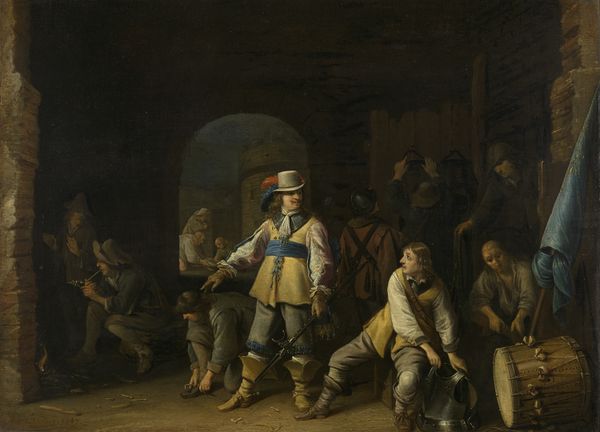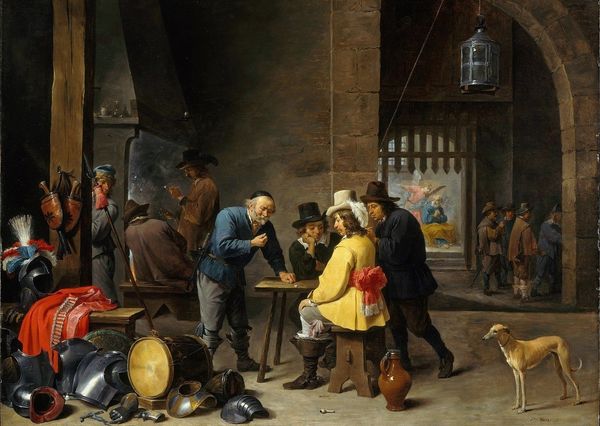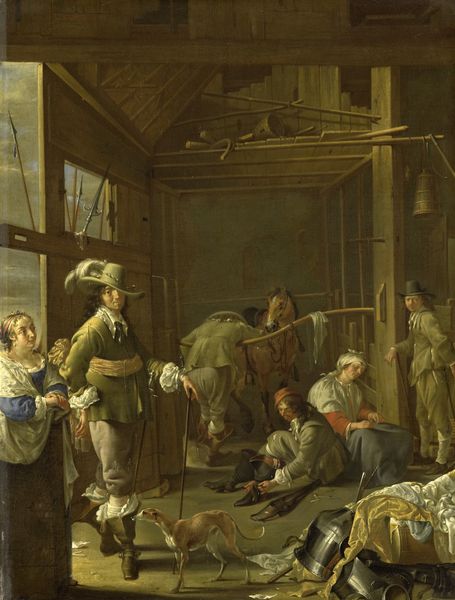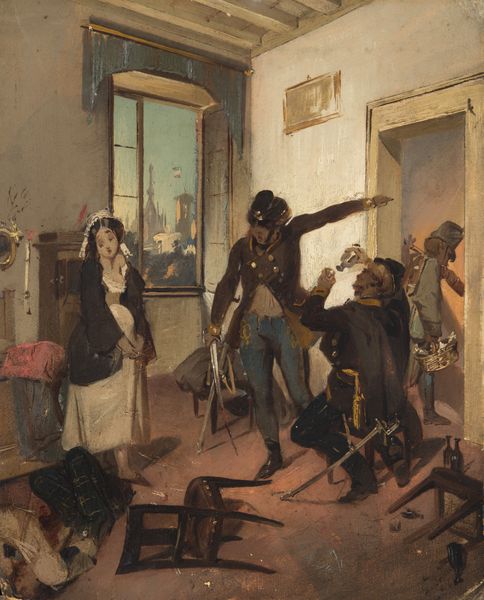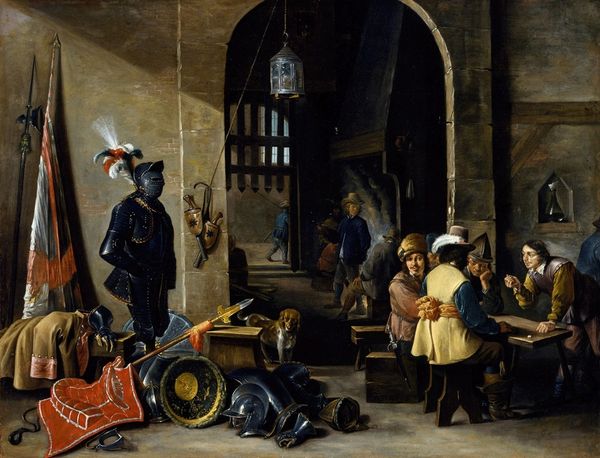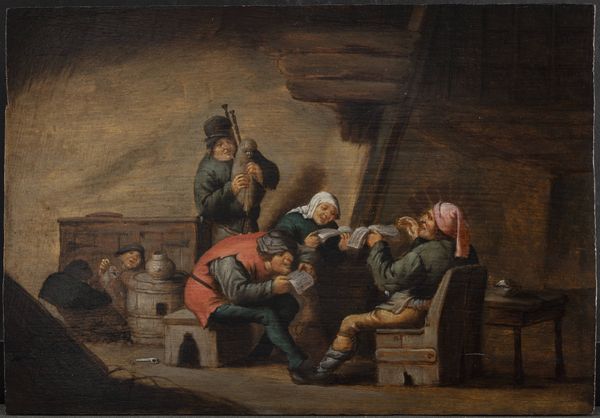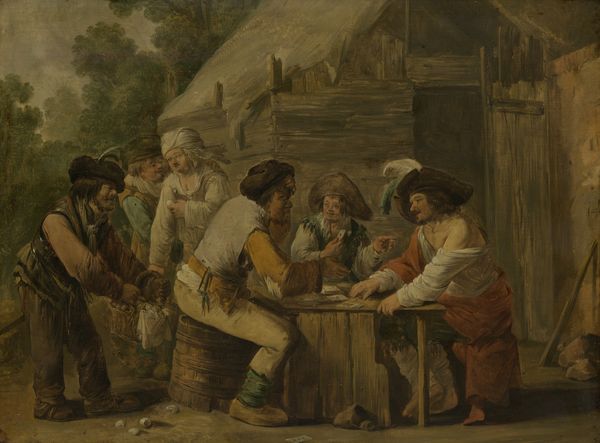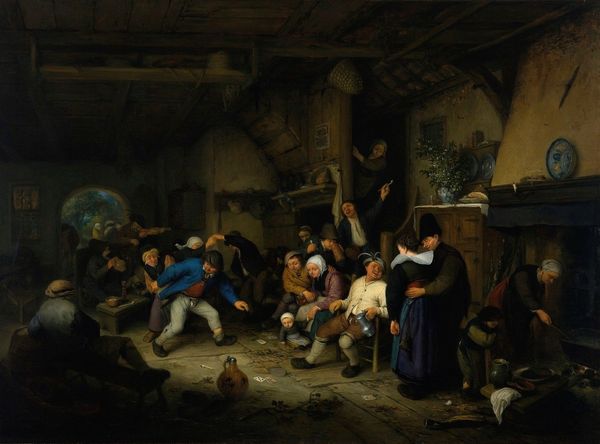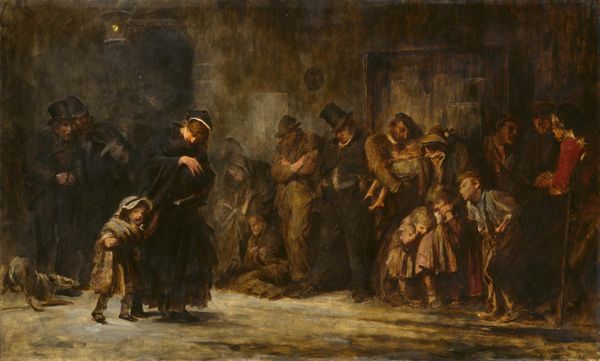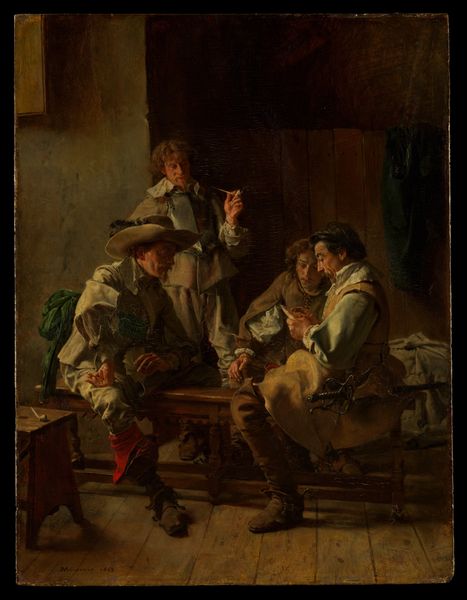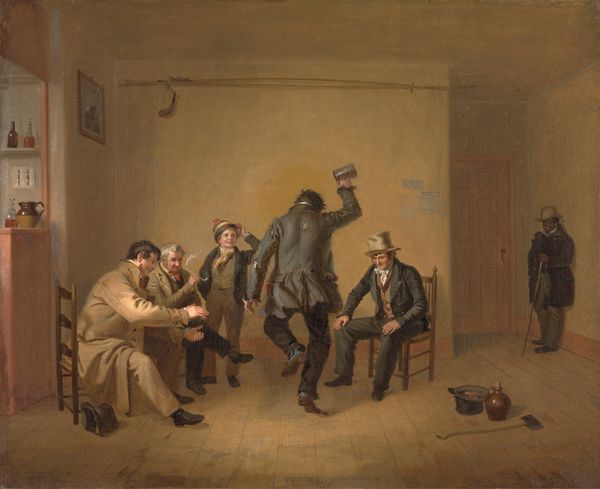
painting, oil-paint
#
narrative-art
#
baroque
#
painting
#
oil-paint
#
figuration
#
genre-painting
Dimensions: 17 x 22 3/8 in. (43.18 x 56.83 cm) (panel)28 x 33 3/8 in. (71.12 x 84.7 cm) (outer frame)
Copyright: Public Domain
Curator: This painting, "Soldiers Arming Themselves" by Jacob Duck, dates to the mid-1630s and calls the Minneapolis Institute of Art home. It's rendered in oil, and a fantastic example of Baroque genre painting. Editor: My first impression is how intimate, how enclosed the scene feels, despite depicting the business of war. There’s this compressed, slightly claustrophobic quality to the space that pulls you right in. What about you? Curator: I love the narrative ambiguity—it sparks the imagination! Are they preparing for a grand battle, or just rousing themselves from a bit too much revelry? Editor: The light is doing a lot of work, isn't it? The dramatic contrast—tenebrism, really— spotlights the figures. Note how it sculpts the forms and isolates certain areas, emphasizing the different activities within the chamber, especially at left, where two men stand while others, at right, still appear to be unconscious on a bed. Curator: There's almost a theatrical staging, yes! The one figure, standing so proudly at the left edge, is like a stage director of his own making, dressed for the stage... ready for the big show... of, you know, potentially very bad things! Editor: The painting's horizontal composition amplifies the compressed feeling, yet the orthogonal lines— those implied vanishing points converging in the open doorway— hint at an expansion and break into another time and location beyond the room's interior. Is this a world on the cusp of momentous happenings? Curator: Absolutely, it could be interpreted in this light. I feel this incredible tension! Editor: For me, the emotional resonance stems from that spatial tension and, like any good Dutch painter, Duck seems fascinated by everyday actions and behaviors and is not always invested in grand historic gestures or narratives, like, say, the epic Italian Baroque of the period. Instead, Duck's light and spatial composition tells a compelling tale. Curator: Exactly! "Soldiers Arming Themselves" isn't about some historical battle, but the very human—and, let's face it, often messy—preparations before.
Comments
minneapolisinstituteofart almost 2 years ago
⋮
On the left, two soldiers caught up in the Thirty Years’ War are dressing, one lifting a bandolier over his head with several cylinders dangling—powder charges containing gunpowder for his musket. On the right, a soldier tickles the nose of a fellow fighter who has presumably passed out after draining the flask nearby. The tickler isn’t aware that his pocket is being picked. Not many Dutch soldiers actually fought in the war, which raged across central Europe from 1618 to 1648, yet paintings of these soldiers became wildly popular. The Thirty Years’ War began when Holy Roman Emperor Ferdinand II of Bohemia attempted to restrict the religious activities of his subjects. His Protestant subjects rebelled and sought support from their Protestant brethren, including the Dutch. The war ended with a series of treaties and the result was a reshaped religious and political map of central Europe.
Join the conversation
Join millions of artists and users on Artera today and experience the ultimate creative platform.
